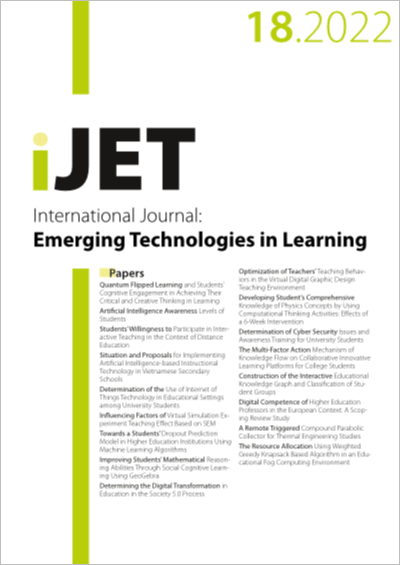A Remote Triggered Compound Parabolic Collector for Thermal Engineering Studies
DOI:
https://doi.org/10.3991/ijet.v17i18.32155Keywords:
solar thermal, compound parabolic collector, evacuated tube collector, remote triggered, virtual lab, engineering educationAbstract
Solar thermal energy systems are one of the most cost-effective renewable energy systems in use today. Engineering students study the design of these systems with the goal of learning how to design similar systems and perform research on improving the heating efficiency and overall operations. This paper elaborates on the design, construction, testing, and validation of a solar thermal system as a remote, open instrumentation lab, using two Compound Parabolic Collector (CPC) evacuated tube collectors with separate heating media. The lab allows for comparing heat transfer rates and collector efficiencies simultaneously for two fluids that have different thermal capacities. The heat patterns could be viewed using thermal cameras to analyze the CPC design. The unique feature of the system is its facility to control the lab remotely, as the setup is interfaced with instrumentation on a web server, thereby allowing students from geographically distant areas to access and perform experiments on the CPCs. A cumbersome lab with expensive hardware and outdoor requirements is thus made easy to perform and learn from via remote access. This remote methodology and hardware and IT architectures are especially pertinent and relevant in the blended and remote learning scenarios made common by the pandemic.
Downloads
Published
How to Cite
Issue
Section
License
Copyright (c) 2022 Joshua Freeman, Dr. Krishnashree Achuthan, Umesh Mohankumar

This work is licensed under a Creative Commons Attribution 4.0 International License.


